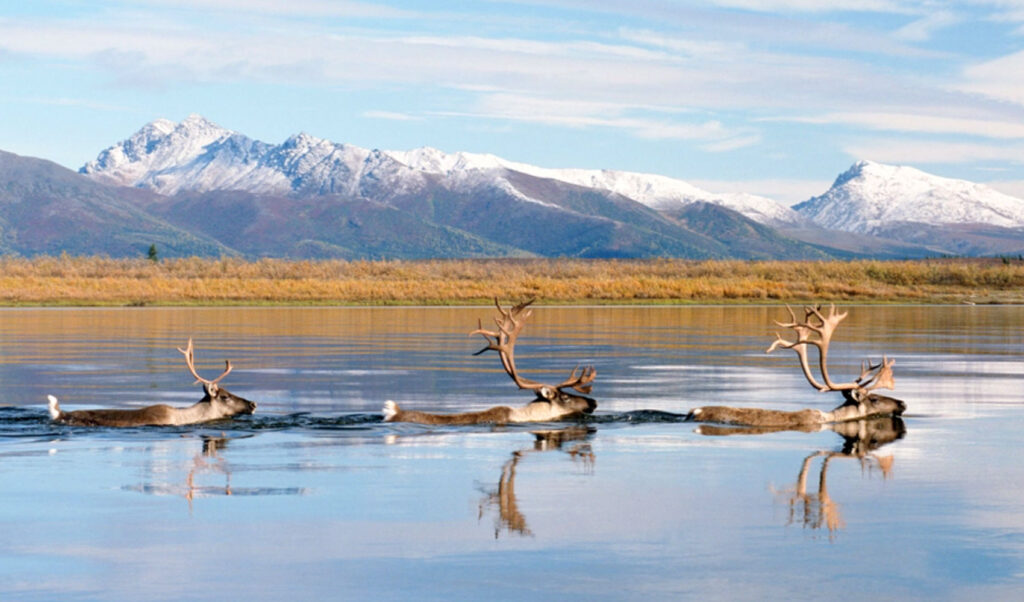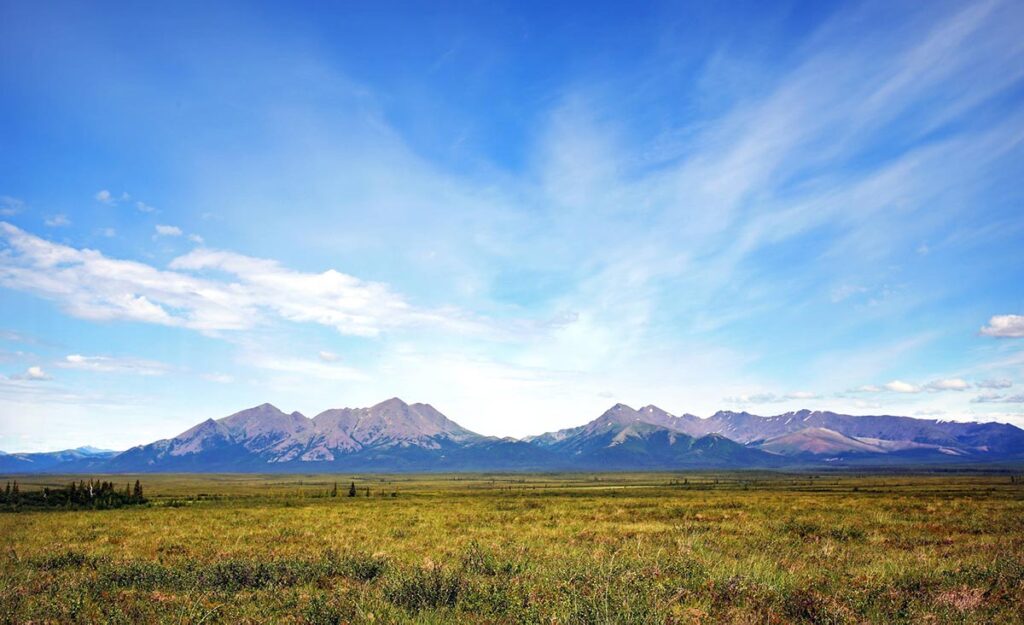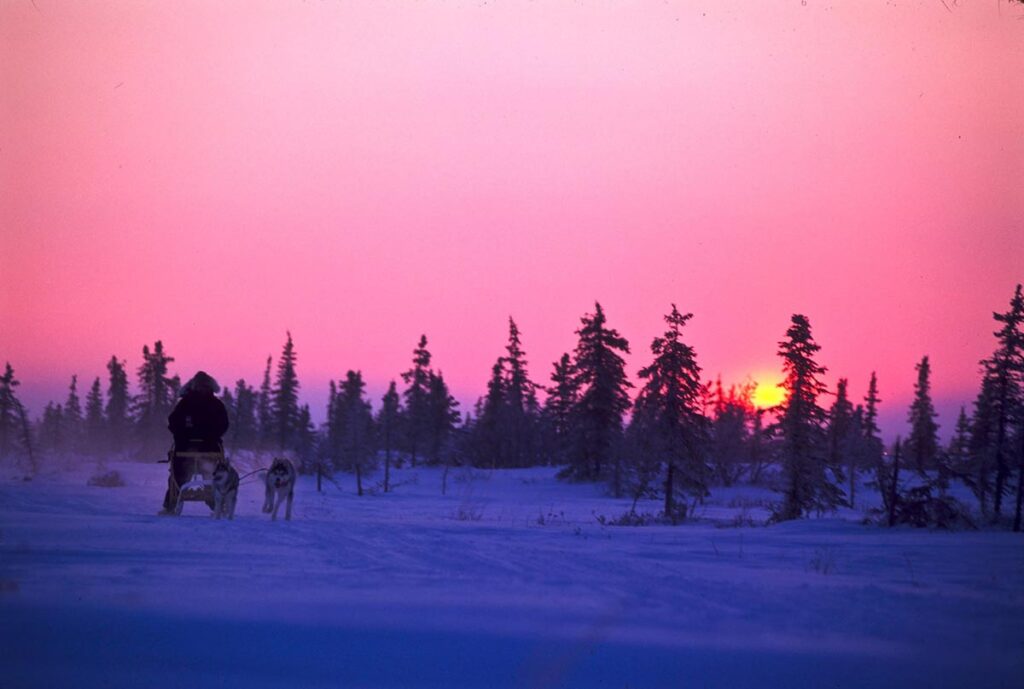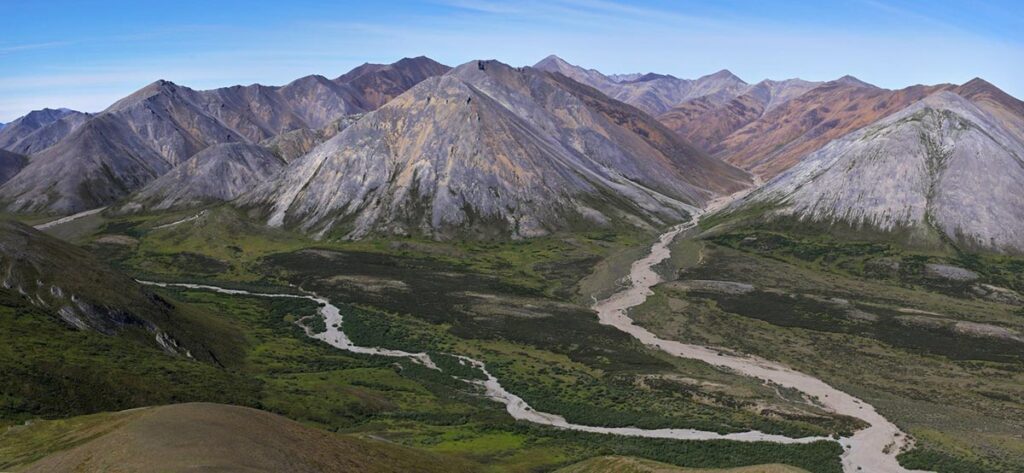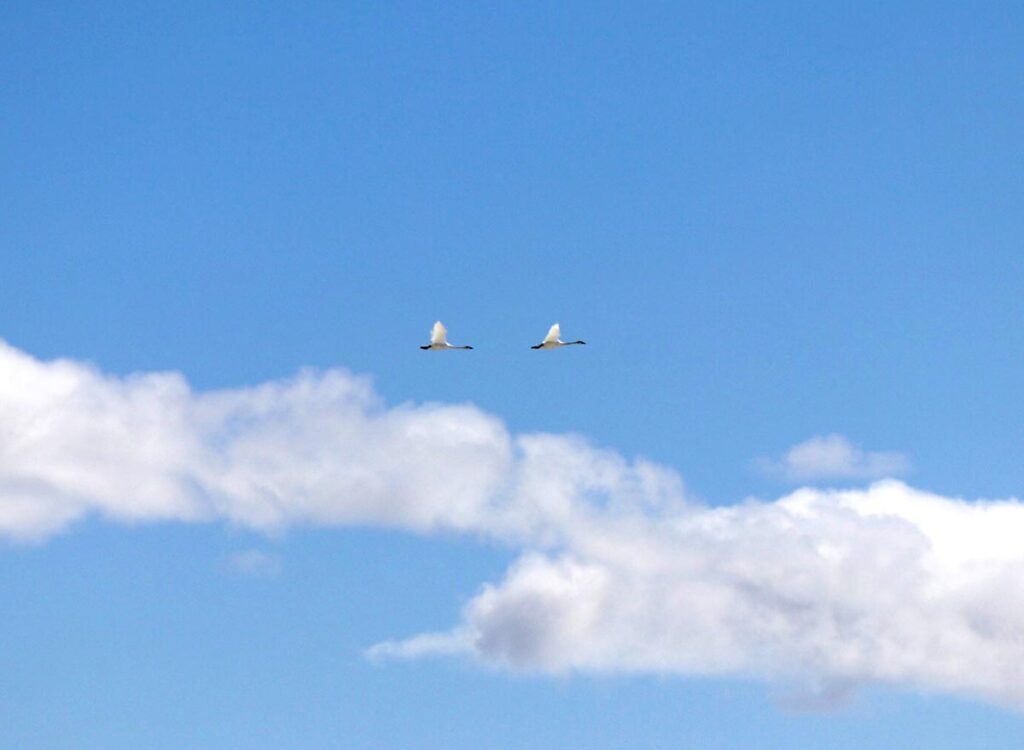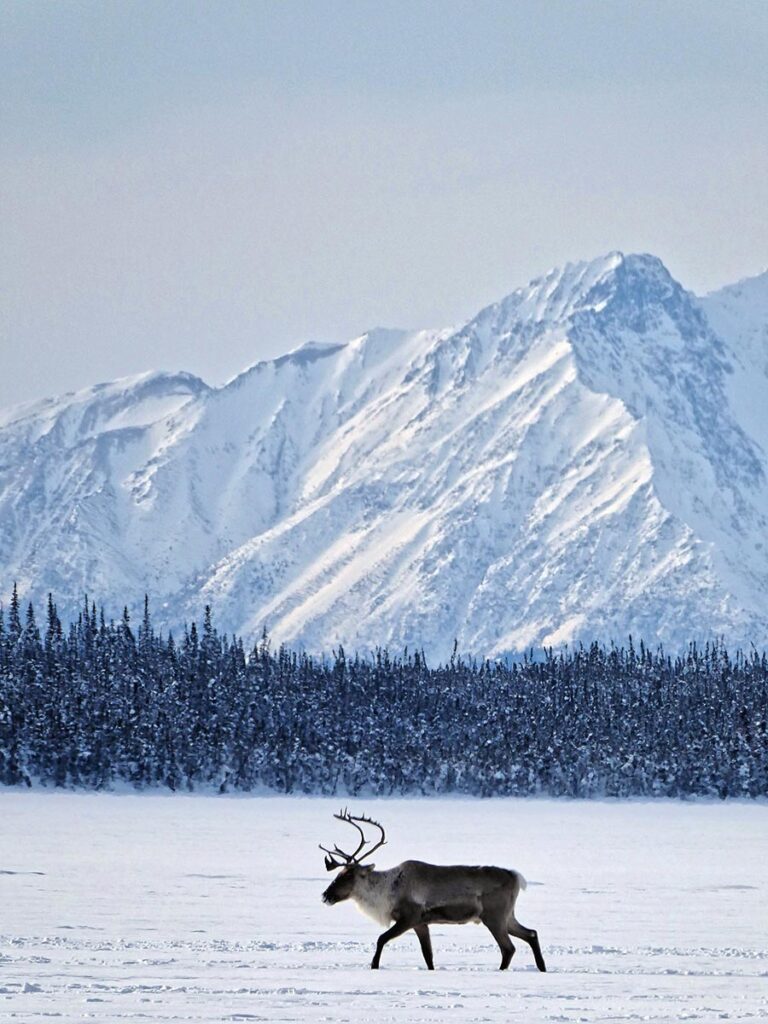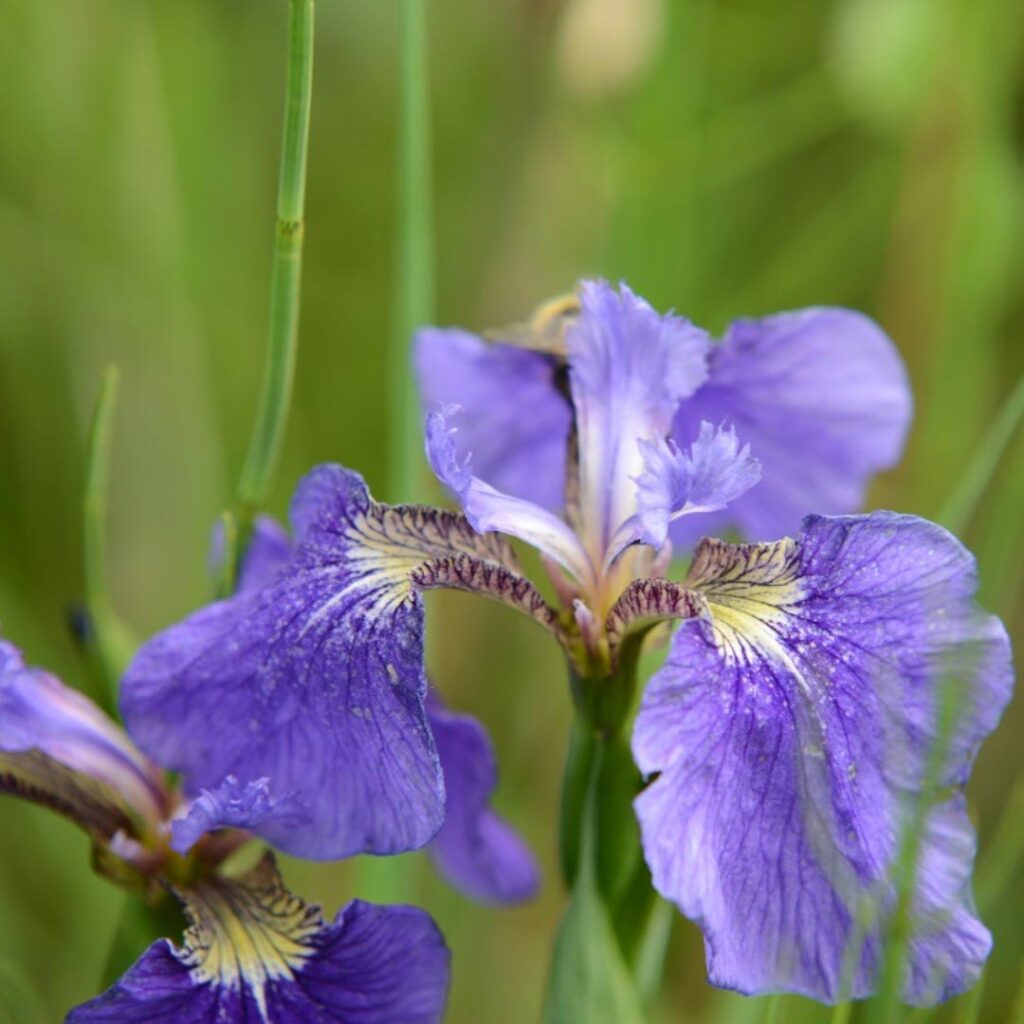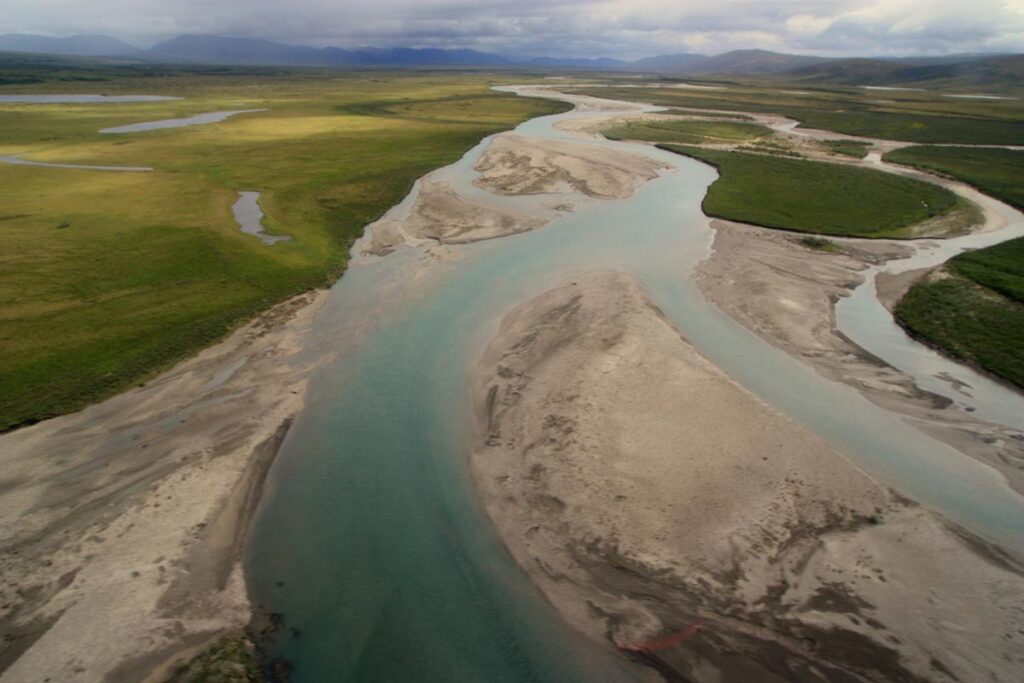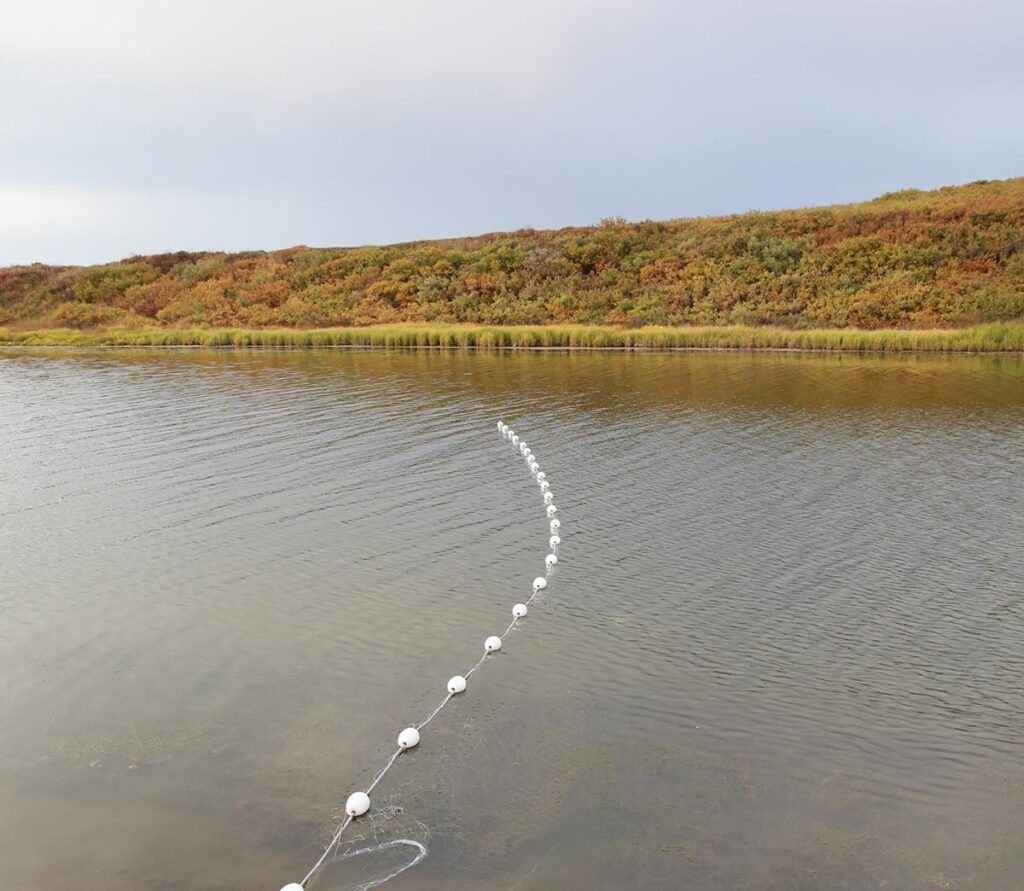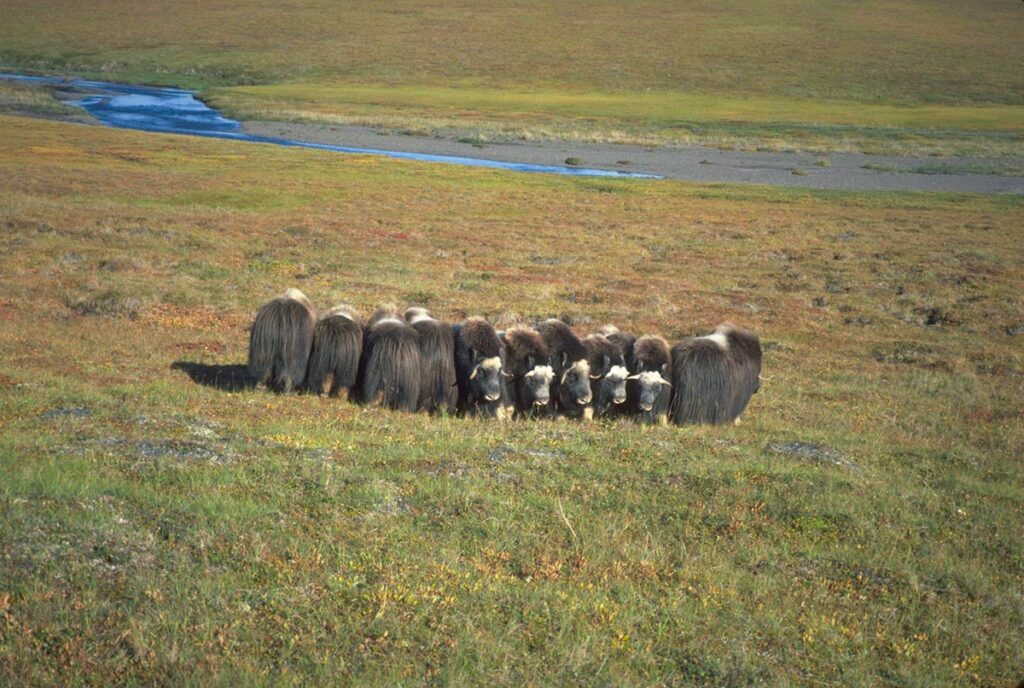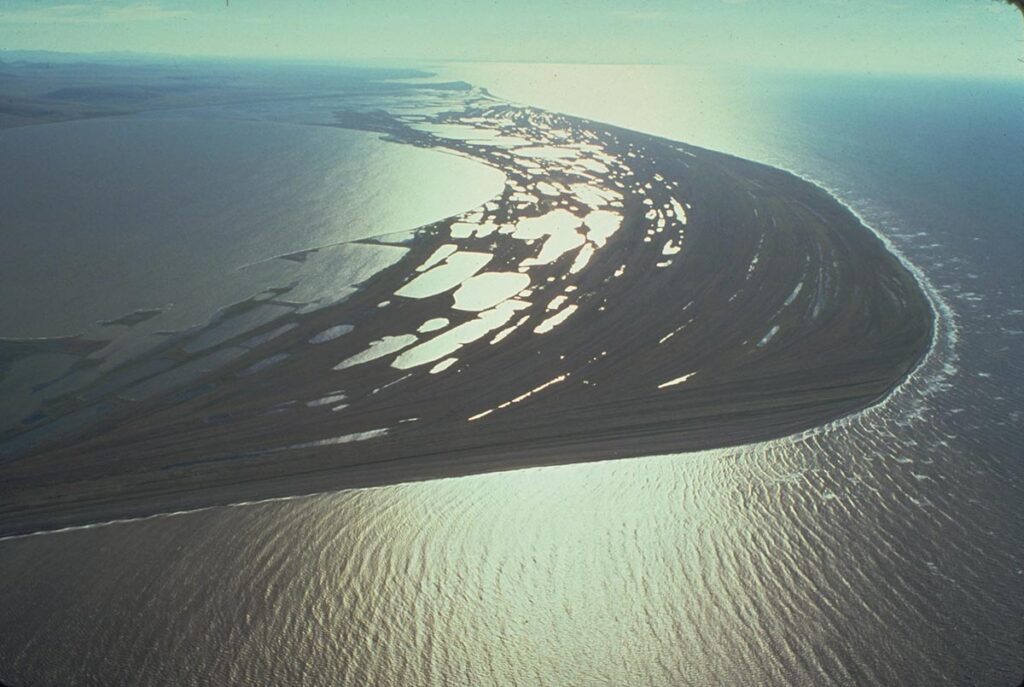Mission
As a Home rule regional government, the Northwest Arctic Borough provides essential programs and services to improve the quality of life for all residents.
vision
Improving living and economic conditions for all residents.
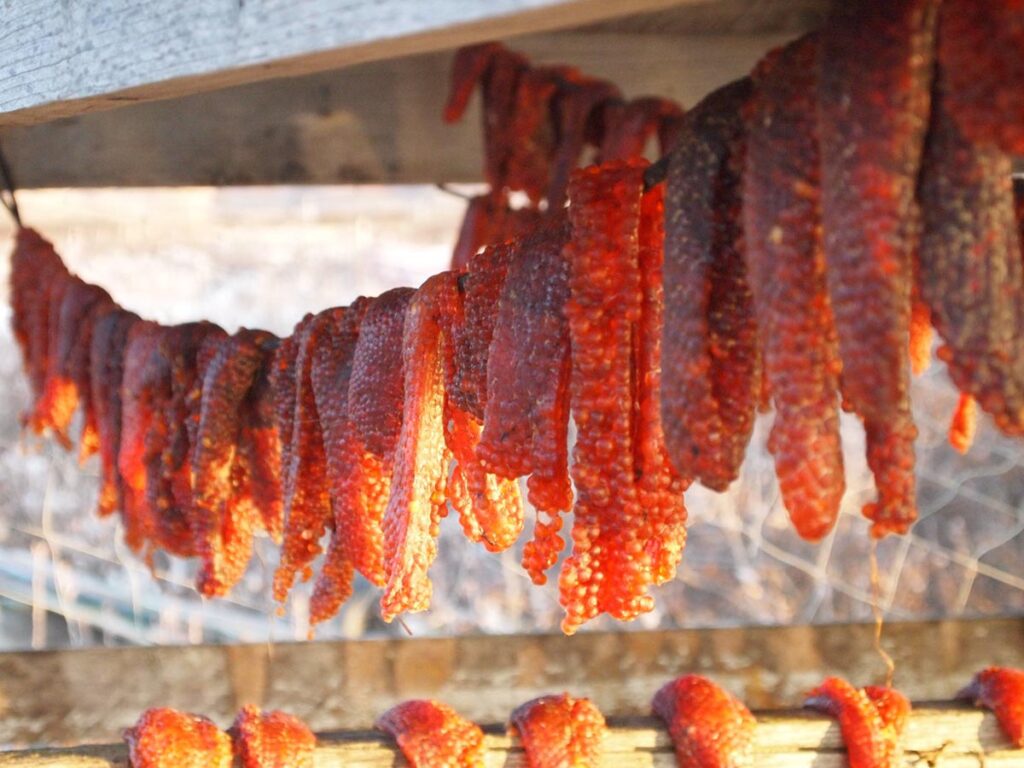
7,715 (July 2019 U.S. Census)
The Northwest Arctic Borough (NAB) is the second largest borough in Alaska, comprising approximately 36,000 square miles along the Kotzebue Sound, Wullik, Noatak, Kobuk, Selawik, Buckland, and Kugruk Rivers. The area encompasses 35,898.3 sq. miles of land and 4,863.7 sq. miles of water. The region experiences a transitional climate, characterized by long, cold winters and cool summers. Temperatures range from -52 to 85 degrees Fahrenheit. Total precipitation averages nine inches per year and average annual snowfall is forty-seven inches.
This region has been occupied by Inupiat people for at least 10,000 years. “Kikiktagruk” was the hub of Arctic trading routes. Kotzebue Sound was “discovered” in 1818 by German Lt. Otto Von Kotzebue on behalf of Russia. In 1899 a post office was established in Kotzebue. Most cities in the NAB developed as supply stations for Interior gold mining and were settled around schools and churches. NAB was incorporated as a First Class Borough in 1986 and became a Home Rule Borough in 1987 (Northwest Arctic Borough Code). The population of the community consists of 85.8% Alaska Native or part Native. NAB population is primarily Inupiat Eskimo, and subsistence activities are a vital part of the lifestyle. Residents rely on caribou, reindeer, beluga whale, birds, four species of seals, berries, greens, and fish. The unemployment rate at that time was 15.55%, although 46.42 percent of all adults were not in the workforce. The median household income was $45,976, per capita income was $15,286.
This information is available on a community basis. Communities located within NAB include the second-class cities of Ambler, Buckland, Deering, Kiana, Kivalina, Kobuk, Kotzebue, Noorvik, Selawik, and Shungnak and the unincorporated community of Noatak. There are 12 schools located in NAB, attended by 2,011 students.
Activities related to government, mining, health care, transportation, services, and construction contribute to the economy. The Red Dog Mine, 90 miles north of Kotzebue, is the world’s largest zinc and lead mine and provides 370 direct year-round jobs and over a quarter of NAB’s wage and salary payroll. The ore is owned by NANA Regional Corporation and leased to TeckAlaska, which owns and operates the mine and shipping facilities. TeckAlaska, Maniilaq Association, the Northwest Arctic Borough School District, and Kikiktagruk Inupiat Corp. (KIC) are NAB’s largest employers. The smaller communities rely on subsistence food-gathering and Native craft-making. 134 NAB residents hold commercial fishing permits. The City of Kotzebue is the “hub” of northwest Alaska and is the transfer point between ocean and inland shipping. Kotzebue does not have a natural harbor and is ice-free for only three months each year. Deep draft vessels must anchor 15 miles offshore, and cargo is lightered to the docking facility. Local barge services provide cargo to area communities. Ralph Wien Memorial Airport supports daily jet service and air taxis to Anchorage.


